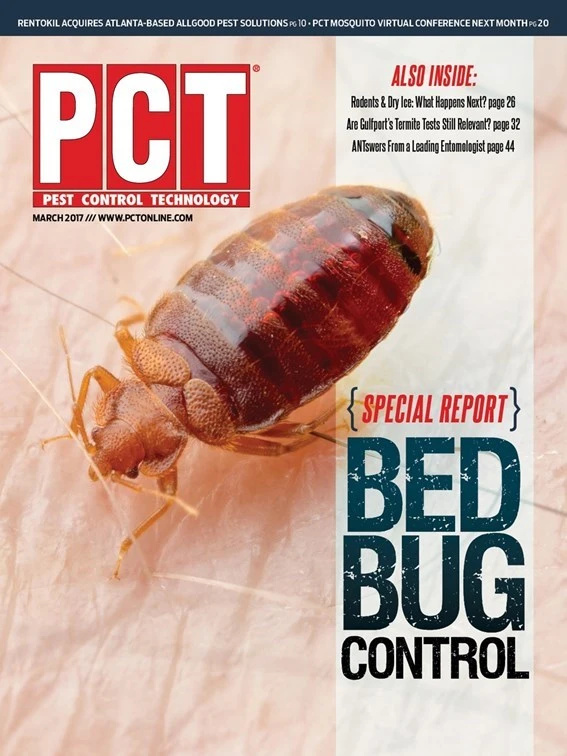The U.S. Department of Agriculture Forest Service (USDA-FS) has been at the forefront of wood protection and preservation research since the 1930s when it first started testing chemicals used to protect wooden crates and temporary structures for the U.S. military. For more than 80 years, scientists at the USDA-FS have been responsible for testing the efficacy of termiticides, providing baseline performance data for several generations of chemicals used by PMPs. (From 1960-96 the USDA-FS termite team worked out of a lab in the city of Gulfport, Miss.; in 1996 the team was moved north to Starkville, Miss.)
During that time, some of the most influential scientists in the industry’s history have been affiliated with the U.S. Forest Service, beginning with Dr. Thomas E. Snyder, known as “Tommie Termite” for his extensive knowledge of the taxonomy, biology and control of subterranean termites. Snyder was a graduate of Columbia University who oversaw the creation of the Smithsonian Institution’s termite collection. One of the highlights of Snyder’s distinguished career was his selection to research control of forest insects out of the main Southern Forest Experiment Station office in New Orleans. He was so revered, in fact, that the southeastern drywood termite is named after him, Incisitermes snyderi.
Snyder’s tenure with the Forest Service was followed by other well-known names in the industry who contributed their time, talent and expertise to ensuring PMPs had the necessary tools to successfully combat termites and other wood-destroying organisms. In 1938, Snyder hired Harmon R. “Johnny” Johnston as a research entomologist; Johnston worked out of the Harrison (Miss.) Experimental Forest, which is in nearby Gulfport. It was during Johnston’s tenure that the “ground board test” was developed to simultaneously test various termiticide formulations and chemistries. Industry veterans will recognize such respected names as Ray Beal and Joe Mauldin, two former project leaders, and Dr. Brad Kard, who served as head of the testing program from 1987 to 2001. Kard joined the U.S. Forest Service at a time when Gulfport research was top of mind for many PMPs around the country. It was on April 15, 1988, when the termiticide chlordane was removed from the marketplace, resulting in the industry being flooded with a number of new product candidates from manufacturers eager to fill the void left by the withdrawal of the popular cyclodiene insecticide that had dominated the market for nearly 40 years. Unfortunately, while these new products were being submitted for testing, Kard’s staff was shrinking as a result of a reduction in federal funding.
Despite challenges, the former Army Ranger remained undeterred, recalling in his 1999 PCT Crown Leadership Award profile: “I wanted to get the products that worked into the field, so I made a conscious decision to take on a heavier workload,” fufilling — along with his staff — the Forest Service’s commitment to provide unbiased efficacy data for termiticide product registrations. It’s a commitment that has continued into the 21st century, which saw Terry Wagner serve as team leader until his retirement in 2012. Today, Guy Shelton is the team leader for the USDA-FS termite group (which also includes the Durability and Wood Protection unit of the Forest Products Lab in Madison, Wis.).
Given all the changes that have occurred over the years, we thought it would be appropriate to explore the past, present and future of the USDA termiticide testing program. The result is an in-depth feature story sure to be of interest to our readers titled, “Are the Gulfport Studies Still Relevant?” Turn to page 32 to learn the answer to that question, as well as review the results of an exclusive PCT survey that tracked our readers’ perceptions about the Gulfport termiticide studies. While a surprising number of PMPs are unfamiliar with the data, others say despite its lower profile in recent years, the Gulfport data continues to be an important benchmark when evaluating termiticides. For instance, Donny Oswalt, owner of the The Bug Doctor, Gadsden, Ala., uses the Gulfport data to select termiticide products and has extrapolated the data to craft treatment strategies, re-treatment intervals and contract stipulations.
As an industry we owe a debt of gratitude to all those scientists both at the U.S. Forest Service and at the basic manufacturer level who have contributed to the advancement of the wood protection field. They have played a key role in protecting our homes and businesses from the destructive nature of termites.
The author is publisher of PCT magazine.
WANT MORE?
Enter your email to receive our newsletters.

Explore the March 2017 Issue
Check out more from this issue and find your next story to read.
Latest from Pest Control Technology
- Envu Introduces Botanical-Based Insecticide to Treat Mosquitoes
- Massey Services' Ed Dougherty Announces Retirement
- Cook's Pest Control Brandon Martin Uses First Responder Training to Save Customer's Life
- VPMA Board Member RJ Mitchell Publishes Children's Book
- NPMA Shares Resources for National Pest Management Month
- Fieldster Launches New Next-Generation Mobile App
- Coalmarch Announces Transition to Private Ownership
- Termatrac Introduces iTraker Pro






